Delightfully known as the ‘City of Dreams’, Austria’s cultured capital Vienna is a lovely place to visit, full of amazing art, history, architecture and music. While both summertime and the Christmas holidays are the peak season, spring and autumn are also popular times to go due to the decent weather.
Aside from the beginning of the year when the city is cold, grey and drizzly, each month sees large numbers visit Vienna’s historical palaces, museums and coffee houses. Besides exploring the center, many come to attend one of the world-famous classical music concerts or opera performances.
To help you plan an unforgettable trip to this enchanting city, let’s now take a look month-by-month at what the weather, crowds and cultural events are like in Vienna.
In this post, we'll cover:
What’s the weather like in Vienna?
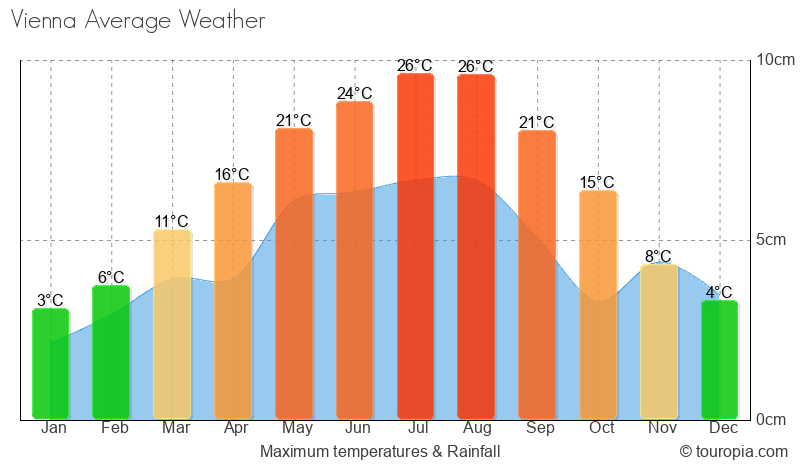
Spanning both sides of the Danube River, Vienna has a humid continental climate with warm, sunny, wet summers and cold, dry winters. Snow also falls during the coldest period of the year but it doesn’t remain for long.
In July and August, the hottest months, temperatures average around 25 to 26°C (77 to 79°F) with the nights sometimes dropping below freezing in December and January. While spring and autumn are both quite unpredictable weatherwise, their blooming flowers and beautiful foliage attract many to the capital.
Despite each month seeing between 9 and 14 days with at least some rainfall, the city isn’t particularly rainy. Things do get quite windy though as it lies in the Vienna Basin surrounded by endless plains, fields and forests.
Best months to visit Vienna
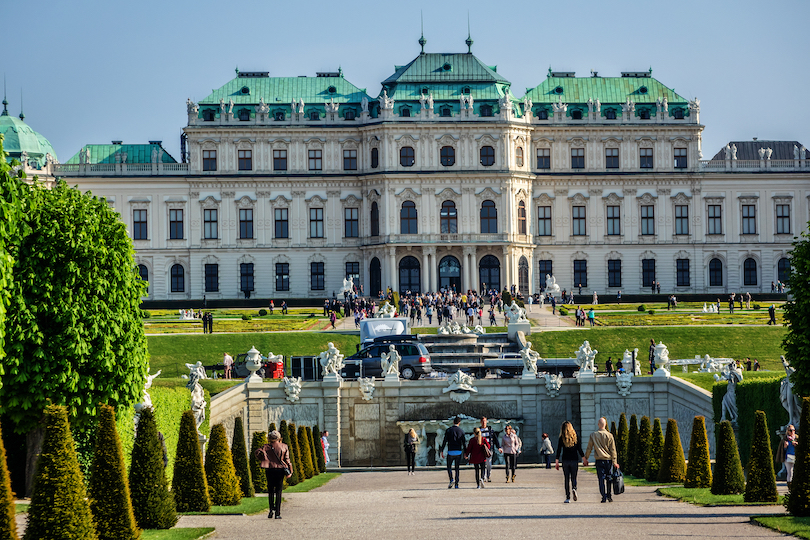
As the weather is warmest and the days are longest, the summer months are when most people visit Vienna. Although the high temperatures are perfect for wandering about the center or relaxing in its parks, prices are at their highest with large crowds also milling about.
As such, the best time to visit Vienna is in either spring or autumn when things are slightly calmer and cheaper. The opera houses have plenty of performances to catch and lots of fun festivals and events also taking place. Averages of around 15 to 21°C (59 to 70°F) are still comfortable for strolling around and enjoying outdoor activities.
December is yet another hugely popular month as the cold, dark days and cheery Christmas decorations create a magical atmosphere. Besides spending time in its grand coffee houses, you can also take part in its glamorous balls and gigantic New Year’s Eve celebrations.
Vienna in January
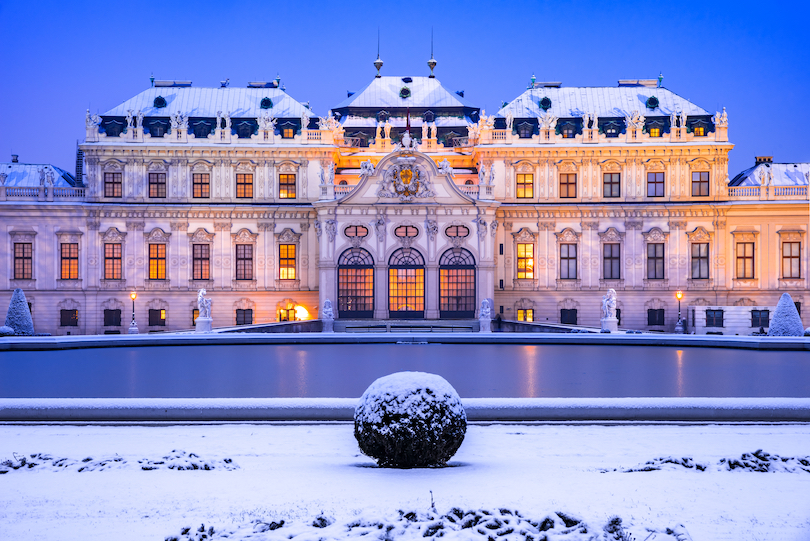
Once Christmas and the city’s famous New Year’s Day Concert are over, January is one of the quietest months in town. Aside from being very cold, averaging just 2°C (35°F), the capital only sees 2 hours of sunshine a day. The freezing rain and wind also make spending much time outside unpleasant!
If you wrap up warm though, you can still have a nice time, especially if it snows. Its lovely buildings and parks look even more spectacular, all coated in white. Prices are also cheaper and there are no queues at any of its museums. You can also watch Die Fledermaus at the State Opera or Volksoper – a popular tradition – or waltz the night away at one of the balls.
Vienna in February
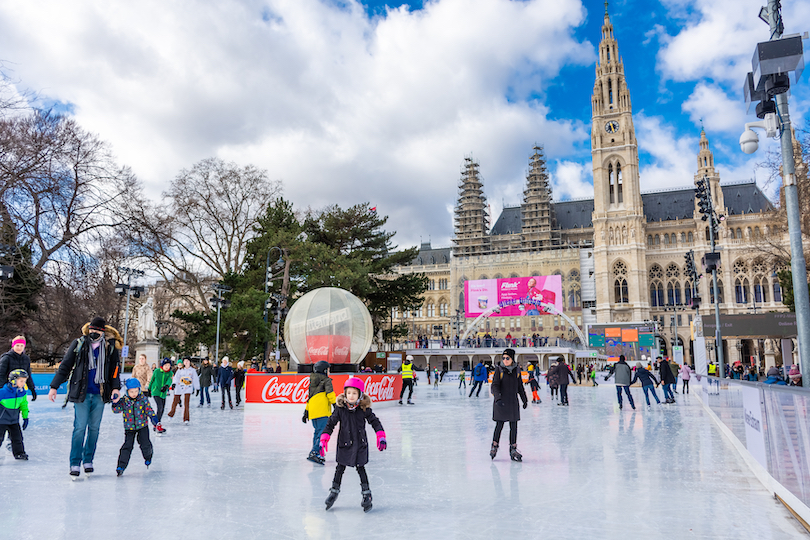
As it is very similar weatherwise to January, February in Vienna is also the low season when most people stay away. The gloomy days and drizzle aren’t great for sightseeing with the wind and ice also making things a bit challenging. On the plus side, the hotel prices and airfares are at their lowest.
To avoid the bad weather, you’ll want to visit one of the many museums and palaces or sit and soak up the atmosphere in one of its elegant coffee houses. As there are so few crowds, February is a good month to see an epic opera or its dancing horses. Besides this, ball season is still going on with many also hitting the slopes at ski resorts or ice skating in front of City Hall.
Vienna in March
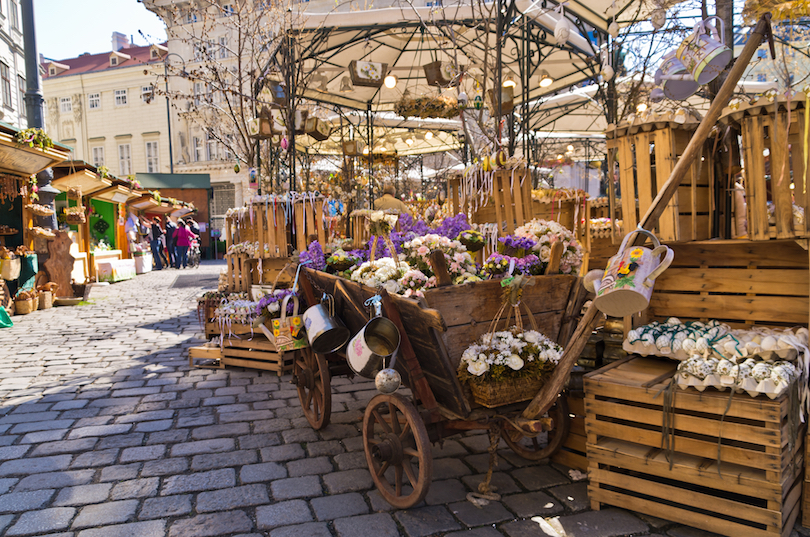
While the weather finally starts to warm up a bit in March, with temperatures rising to 10°C (50°F), tourist numbers remain quite low. There may be more people and specialty markets around though depending on when Easter falls. For the most part, however, crowds and prices are more manageable than later in the year.
With a couple more hours of sunshine and daylight, you can amble about the city center or examine all the freshly blooming buds in its parks. There is also less chance of snow and the skies are clearer. In addition, the long-running Vienna Blues Spring Festival has hundreds of amazing concerts for you to attend.
Vienna in April
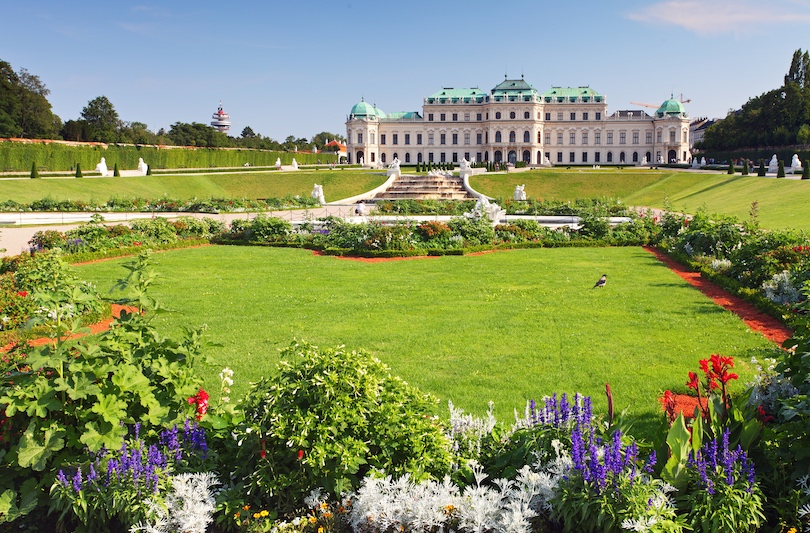
As temperatures soar to 16°C (61°F) and people have holidays, April sees huge numbers of visitors pour into Vienna. While both the prices and crowds increase, the city is nowhere near as full as in summer or around Christmas. Spring has definitely arrived and all the parks are looking a lot greener.
Aside from catching a classical concert or opera, you can cheer contestants on at the Vienna Marathon or even run yourself! April is the ideal month to take day trips to both Bratislava and Budapest before they also get overrun and more expensive in the summer.
Vienna in May
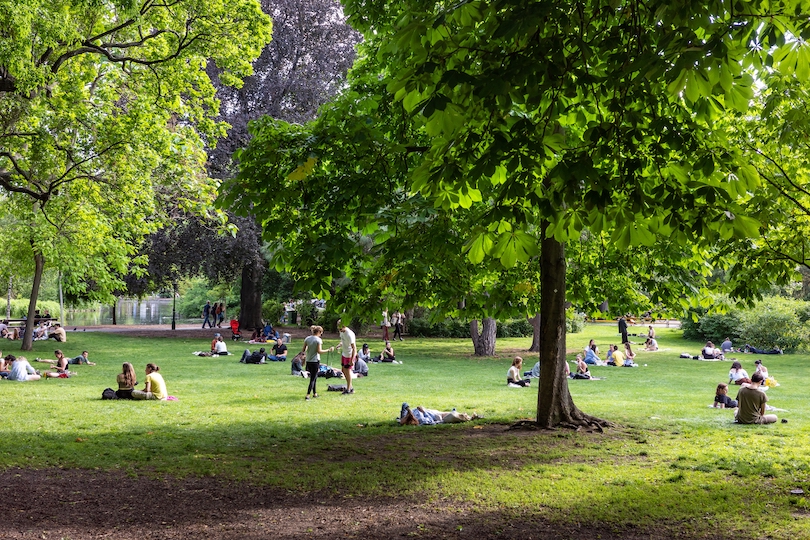
Although it is a bit wetter, May is another massively popular month for visiting Vienna. With averages of 20°C (68°F), you can either stroll around the center or hike and bike about the Vienna Woods. The longer, sunny days are also great for sitting at outdoor cafes or relaxing in its pretty green parks.
While prices are higher and there are more crowds, its main sights and museums aren’t yet too busy. Due to the warm weather, it is worth taking a scenic cruise along the Danube River or visiting some of the wonderful wineries in the Wachau Valley. Countless culinary events are held all around town while hundreds of concerts and exhibitions take place for the five-week-long Vienna Festival that continues into June.
Vienna in June
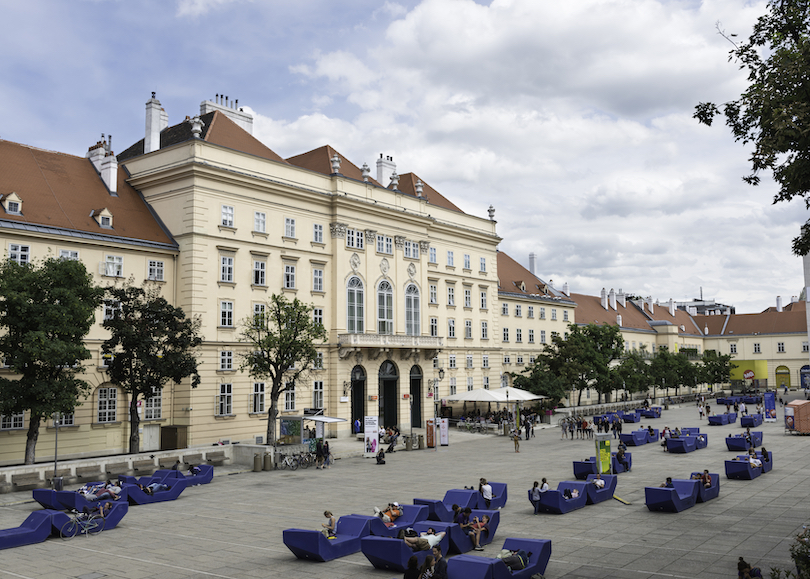
Other than attending some of the Vienna Festival’s dance, theatre and film productions, you can party and listen to live acts at the Danube Island Festival. Other popular events include the two-week-long Vienna Pride and the highly regarded Jazz Festival. This is also the last month you can watch world-famous operas before the summer break.
June also has the most hours of daylight in the year – 16 – with temperatures of about 23°C (73°F) being perfect for sightseeing. It is also the rainiest month, however, so it’s well worth bringing an umbrella! While everywhere is quite busy and expensive, there is a lovely, lively feel about the city.
Vienna in July
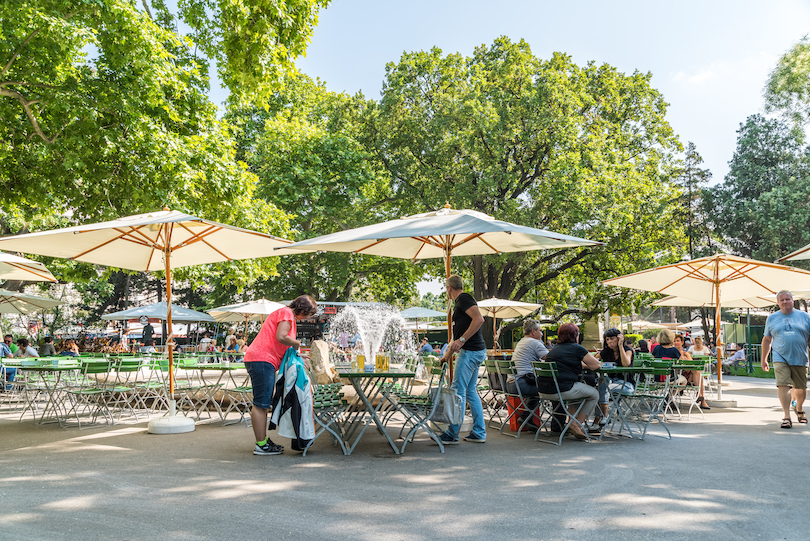
Due to the sunshine, holidays and hot temperatures of 26°C (79°F), July is the peak season in Vienna. The warm weather and blue skies are ideal for hiking in the verdant parks and woods or splashing around in the river. Make sure to take a jacket though as it rains 13 days on average.
While Vienna has an exciting buzz about it in July, prices are higher and long queues form at its main tourist attractions and for the Prater’s many fun amusement rides. Both its dancing horses and opera houses take a break for the summer. There is always something going on though as Rathausplatz hosts huge film screenings and an international food court.
Vienna in August
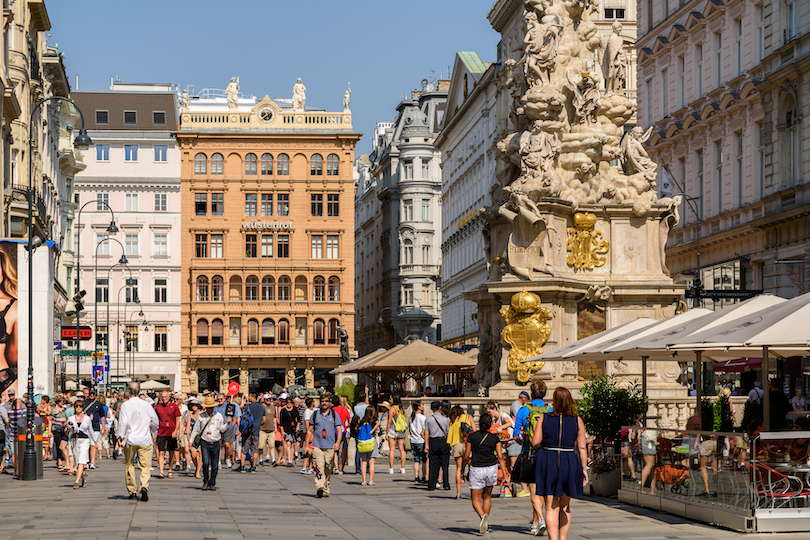
August is even more crowded with average temperatures remaining high. Besides sitting at one of its outdoor cafes enjoying the capital’s architecture and ambience, you can cool off in the Danube or the Vienna Woods. As many Viennese take their holidays and head off, there aren’t normally too many locals around.
While the opera houses are still on their summer break, there are of course outdoor film screenings to see in Rathausplatz. The colourful Afrika Tage festival also creates a wonderful atmosphere with all its concerts and cultural events as does its International Dance Festival. Although the days are a bit shorter and there is still quite a bit of rain, August is by far the most popular month to visit Vienna.
Vienna in September
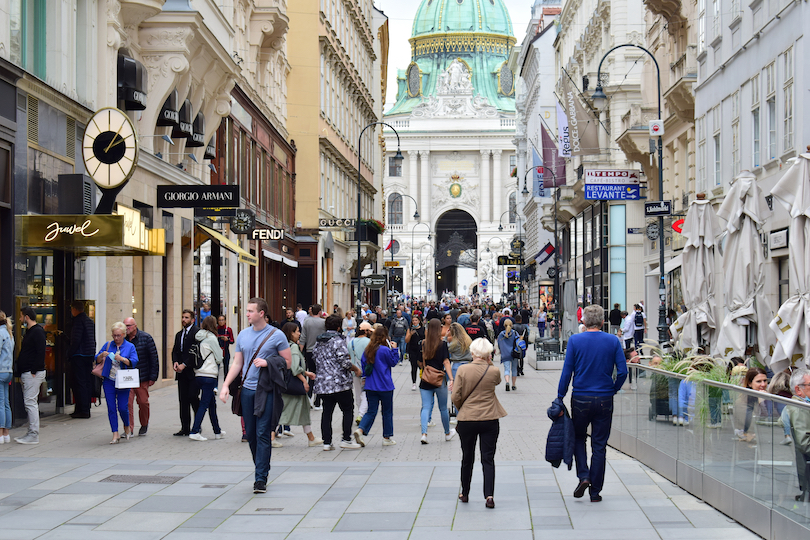
Once the summer holidays are over and the kids are back at school, the crowds slowly start to dwindle. While flights are cheaper, accommodation prices remain relatively high. As it is the harvest season, this is one of the best months to take tours of its wineries and cruise along the Danube River.
With clear skies and temperatures still in the low 20s (70s), conditions are great for walking around Vienna’s plentiful parks and palaces. The attractive autumnal foliage also creates some fantastic photo opportunities. Tons of terrific art, food and film festivals are also held around the city while astounding operas are once again put on at the opulent opera houses.
Vienna in October
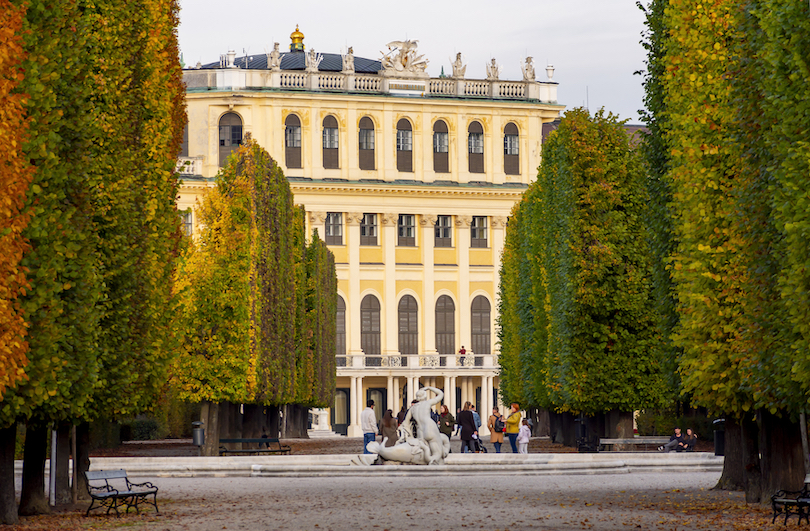
October is another popular month to visit Vienna as the glittering golden colors of its trees make the streets, parks and green spaces look so picturesque. As well as being much calmer and cheaper than summertime, it is generally much drier though endless drizzle does tend to set in towards the end of the month.
While average temperatures remain a comfortable 15°C (59°F), the skies are often quite overcast and cloudy. The center is way less crowded though with its Long Night of Museums event being an excellent opportunity to see some of its many interesting exhibitions. This is also a great month to attend operas or some of the Spanish Riding School’s performances.
Vienna in November
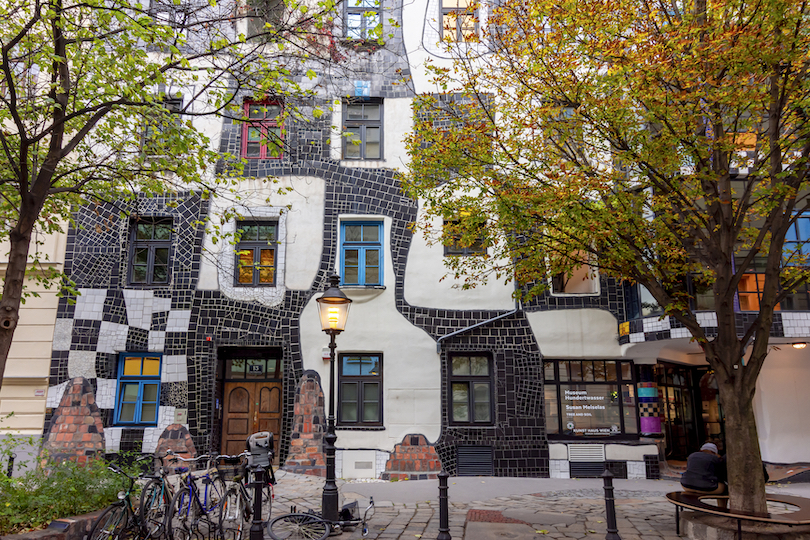
Aside from January, February and March, November is by far the quietest month in Vienna when most people stay away. Spending time outside is less pleasant as the days are darker, colder and wetter. To avoid the bleak weather, explore the many museums or sit and soak up the ambience in one of the historic coffee houses.
If you don’t mind the rain and wrapping up warm, then hotel prices and airfares are very affordable. Halfway through the month, cheery holiday decorations are strung up all around town with Christmas markets also setting up here and here.
Vienna in December
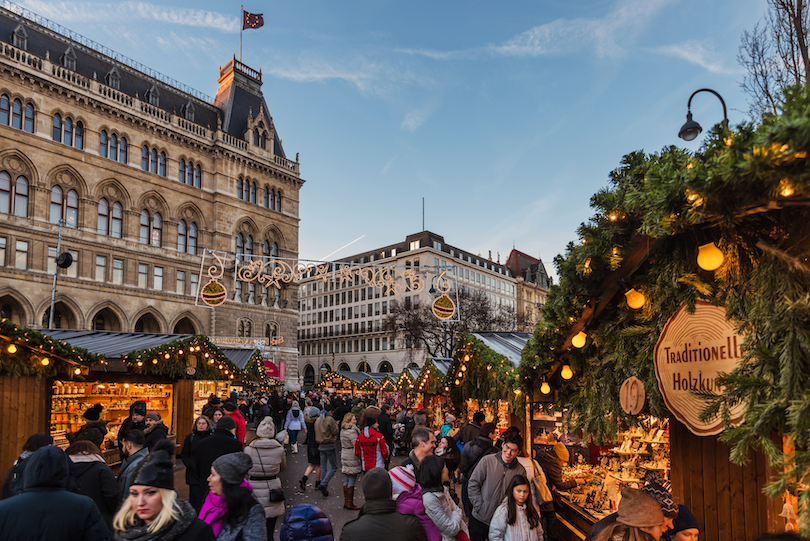
Despite the dark, cold and wind, December sees huge numbers of visitors pour into Vienna for the festive season. Other than ambling around the many Christmas markets, you can waltz to wonderful orchestras at some of the elegant balls.
As temperatures drop to just 3°C (37°F), you’ll have to layer up whenever you head outside with snow sometimes falling when the weather is particularly cold. Due to the crowds, prices are higher with hotels and restaurants packed. In addition to celebrating Christmas here, you can welcome in the New Year at one of the stages and markets set up around town.

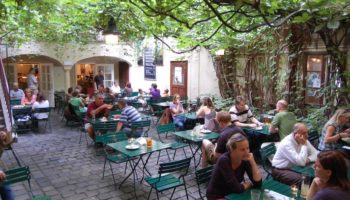
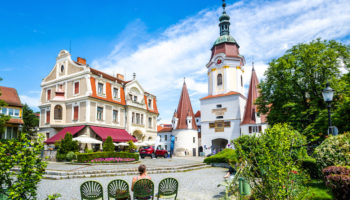
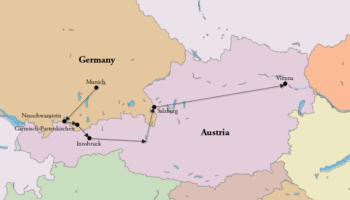
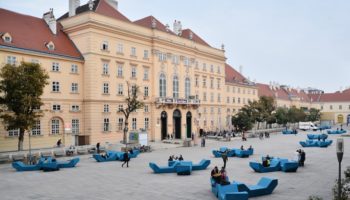
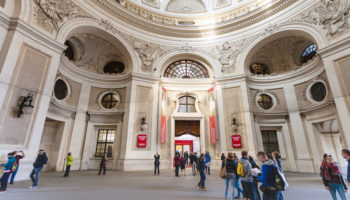
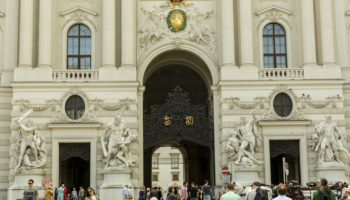
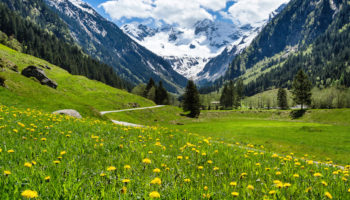

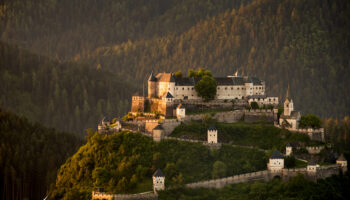
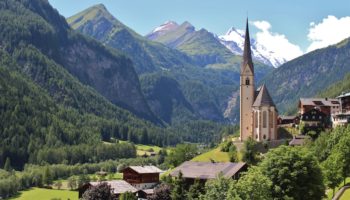
Leave a Reply